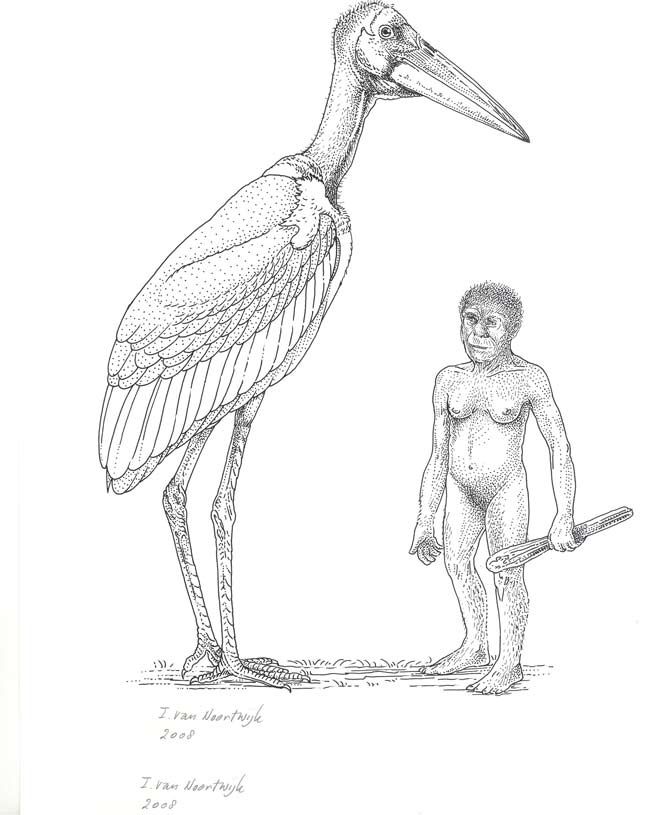Giant Storks May Have Fed On Real Hobbits

In the "Lord of the Rings" books, hobbits were rescued by giant eagles, but real-life hobbits might have been hunted by giant storks, scientists find.
The fossil remains of what may have been a hobbit-like species of human were discovered in 2003 at the Liang Bua cave on the Indonesian island of Flores. In that cave, scientists also unearthed a large number of bird fossils — including 20,000- to 50,000-year-old wing and leg bones from what appears to have been a stork nearly 6 feet tall (1.8 meters).
"From the size of its bones, we initially were expecting a giant raptor, which are commonly found on islands, not a stork," said Hanneke Meijer, a vertebrate paleontologist at the Smithsonian Institution in Washington.
The carnivorous giant (Leptoptilos robustus) was a hitherto unknown species of marabou stork, among the largest birds alive on the planet.
Meijer and her colleague, Rokus Awe Due, detailed their findings online Nov. 24 in the Zoological Journal of the Linnean Society.
"Flores lacked any large-bodied mammalian predators — no hyenas, lions, wolves or dogs — so we think, in their absence, birds like storks moved in to fill that role," Meijer told LiveScience. It was likely a ground-bound hunter, as its bones were thick, giving the bird an estimated weight of 35 pounds (16 kilograms).
The extinct predator could have fed on fishes, lizards and birds, "and possibly in principle even small, juvenile hobbits, although we have no evidence for that," she said. "These birds are opportunistic carnivores — if you give them plenty of prey items, they'll hunt all of them."
Sign up for the Live Science daily newsletter now
Get the world’s most fascinating discoveries delivered straight to your inbox.
There are no signs yet of whether hobbits returned the favor by hunting these birds. "No cut marks are seen on any of its bones," Meijer said.
Flores was home to a wide variety of dwarf and giant species, a common occurrence on islands. Among Flores' inhabitants were the pygmy elephant Stegodon and the Komodo dragon, the world's largest living lizard. Many of the prehistoric animals there went extinct about 17,000 years ago, coinciding with a volcanic eruption that might have taken place on the Indonesian island of Bali, as well as shifts to a wetter climate and the arrival of modern humans.
"We're not certain as yet precisely why they all went extinct," Meijer said.
Meijer and her colleagues now plan to investigate all of the bird fossils in the cave to figure out when species arrived or evolved and when they went extinct. "This could give us a better idea of what evolutionary forces are at work there, not only on birds, but also hobbits," she said.
It remains uncertain why the cave housed so many bird fossils. "We hope a detailed study of all the layers of bones there could help explain why all these animals ended up there," Meijer said.
As for the realm of fantasy, "stories like 'Lord of the Rings' do add a nice fantasy touch to my work," Meijer said. "I have looked into legends of Indonesia to see if there were any stories of giant birds and didn't find any."












